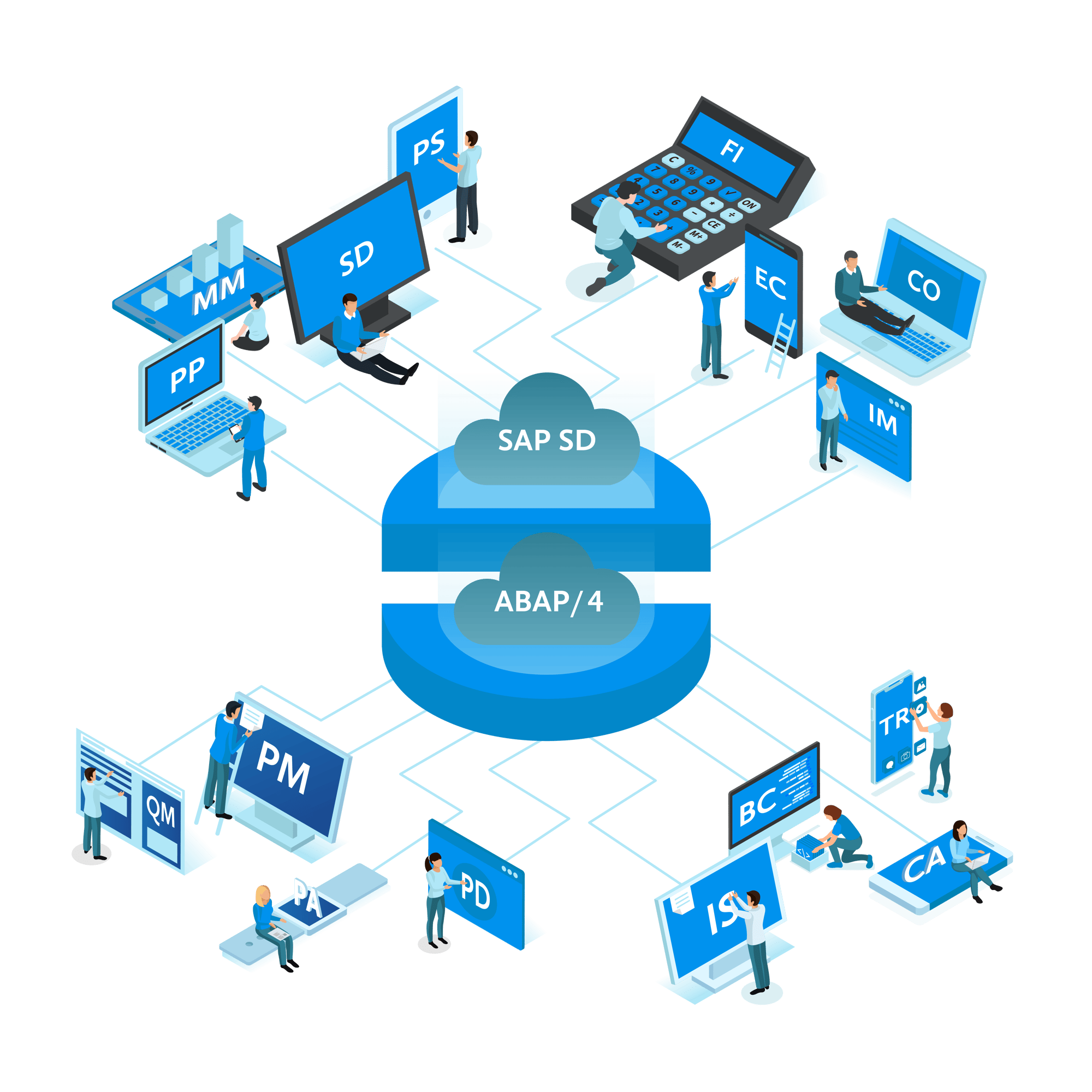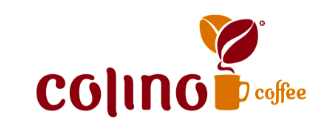Not exactly. OTC (Order-to-Cash) is the end-to-end business process, while SAP SD is the module inside SAP that manages and automates it. In other words, OTC is the journey, and SD is the engine that powers it.
Need a SAP SD Consultant - We Can Help

Lonnie D. Ayers, PMP
President

Introduction
When most people think about enterprise software, they imagine finance ledgers, HR systems, or supply chain dashboards. Yet one of the most critical functions inside any business is often less visible: the flow of sales orders from the first customer inquiry through delivery, billing, and cash collection. In the SAP world, this process is managed by the Sales & Distribution (SD) module, the engine behind the Order-to-Cash (OTC) cycle. Getting it right means orders are confirmed quickly, products are shipped on time, invoices are accurate, and revenue is recognized without delay. Getting it wrong can lead to customer frustration, compliance risks, and serious revenue leakage. 
That’s where SAP Sales & Distribution Consulting comes in. Our consultants bring decades of experience leading global SAP programs across industries such as consumer goods, pharmaceuticals, chemicals, oil and gas, automotive, high tech, and wholesale distribution. They have delivered full life-cycle implementations, complex S/4HANA migrations, and multi-country rollouts, often in highly regulated and fast-moving markets. This means our team not only understands the technical configuration of SD—sales order types, pricing procedures, credit checks, returns, rebates, and advanced shipping scenarios—but also the business realities behind them: keeping customers happy, managing distributor networks, and ensuring compliance with local tax and trade rules.
With the shift from ECC to SAP S/4HANA, SD has evolved even further. Capabilities such as Advanced Available-to-Promise (AATP), embedded analytics, Business Partner conversion, and Fiori-based user interfaces are transforming how sales and logistics teams work day to day. Variant configuration now enables businesses to offer personalized products without creating bottlenecks. Integration with finance, production, and warehouse management is tighter than ever, creating new opportunities for real-time visibility across the enterprise.
This page is designed for business leaders, project sponsors, and IT stakeholders who want to understand the essentials of SAP SD and how consulting expertise can accelerate results. Whether you are exploring SAP for the first time, considering an upgrade, or simply want to benchmark your current OTC process, you will find practical explanations, real-world scenarios, and proven approaches here. By the end, you’ll see why investing in experienced SAP SD consultants is not just about implementing software—it’s about enabling sustainable growth, compliance, and customer satisfaction.
Curious how your current sales and distribution processes stack up? As you read through this guide, watch for opportunities to benchmark your own Order-to-Cash setup. And when you’re ready, we’ll show you practical ways to assess your SAP SD readiness and map the right next steps for your business.
What Is SAP SD? (and why it matters)
SD in the Order-to-Cash lifecycle (inquiry → quotation → order → delivery → billing → revenue posting).
SAP Sales & Distribution (SD) is the module that powers the Order-to-Cash (OTC) process inside SAP. From the first customer inquiry all the way to receiving payment, SD ensures that every transaction step is structured, traceable, and integrated with finance and logistics. By managing quotes, orders, deliveries, and invoices in one system, companies reduce errors, accelerate sales cycles, and improve cash flow.
Core building blocks
Behind the scenes, SAP SD is made up of essential elements that keep transactions running smoothly:
-
Master data (customers, materials, and pricing conditions)
-
Sales documents (inquiries, quotations, orders, returns)
-
Pricing and discounts (condition techniques, rebates, promotions)
-
Delivery and billing documents (shipping, invoicing, revenue posting)
-
Credit and returns management (ensuring risk is controlled while customers remain supported)
Together, these components make SD the foundation for reliable, scalable sales operations.
ECC vs S/4HANA at a glance
For years, companies have run SD on SAP ECC, but the move to SAP S/4HANA has brought major enhancements. Key differences include:
-
Business Partner (BP) model: streamlining master data across sales, finance, and procurement.
-
Advanced Available-to-Promise (AATP): real-time inventory checks, backorder processing, and substitutions.
-
Embedded analytics and Fiori UX: making insights and transactions easier for sales and logistics teams.
These innovations make SAP SD in S/4HANA more than just a transaction processor—it becomes a growth enabler that helps organizations adapt faster and serve customers better.
The OTC Process, Step by Step
From lead to invoice—how SD connects the dots
At its core, SAP Sales & Distribution manages the Order-to-Cash (OTC) process. Think of it as the journey a customer order takes, from the moment they express interest in your product until the moment your company recognizes revenue. SAP SD provides the structure and automation that make this journey efficient, accurate, and auditable. By connecting every step—from lead management through invoicing—SAP ensures that your sales, logistics, and finance teams are always working from the same source of truth.
Common document types
SAP SD organizes each step of the OTC process into business documents. These aren’t just pieces of paper—they’re structured digital records that ensure nothing gets lost in translation:
-
Inquiries & Quotations: capture customer interest and provide official pricing offers.
-
Sales Orders: the binding agreement that drives delivery and billing.
-
Deliveries & Shipments: record when goods are picked, packed, and shipped.
-
Billing Documents: generate invoices, credit memos, or debit memos.
-
Payments: post directly into finance for clean revenue recognition.
Each document is connected, so if an order is returned or a price changes, downstream documents update automatically. That’s how SAP reduces errors and speeds up cycle times.

Explore how we solve real-world SAP SD challenges with proven consulting services
Common Real-World Scenarios (Explained Simply)
Third-party & intercompany sales
Not every order is delivered directly from your warehouse. Sometimes a supplier ships on your behalf (third-party sales), or goods move between company codes (intercompany sales). SAP SD handles these scenarios natively, ensuring that purchase orders, deliveries, and invoices stay aligned — even when multiple legal entities are involved.
Consignment, returns, and credit/debit
In industries where inventory sits at the customer site (consignment), or where returns and adjustments are frequent, SD provides the processes to track goods, manage credits and debits, and protect revenue. This makes it easier to serve customers flexibly without losing financial control.
Variant configuration in plain English
Think of industries like automotive or high-tech, where products come with many options. Instead of maintaining thousands of material numbers, SAP SD’s variant configuration allows you to build products on demand by combining features (color, size, add-ons). This streamlines sales while still meeting unique customer needs.

See how these challenges are addressed through consulting solutions
Integrations That Make SD Work
Finance (FI/CO)
Every sales transaction eventually touches finance. With SAP SD integrated into FI/CO, invoices post directly to accounts receivable, revenue is recognized in real time, and credit management helps control risk. This connection ensures that sales growth doesn’t come at the cost of compliance or cash flow visibility.
Supply & Logistics (MM/EWM/PP)
A sales order is only as good as the supply chain behind it. Integration with Materials Management (MM), Extended Warehouse Management (EWM), and Production Planning (PP) ensures that availability checks (ATP), deliveries, and production runs are all aligned. The result: customers get what they ordered, when they expect it, without surprises.
Commerce/CRM & EDI
Modern businesses sell through many channels — e-commerce, distributor networks, and direct sales. SAP SD integrates with SAP Commerce Cloud, CRM, and EDI systems to keep customer, pricing, and order data consistent across touchpoints. This reduces manual effort, accelerates order entry, and improves customer satisfaction.

Business Value & Metrics (No tech required)
Faster, cleaner OTC = better performance
When SAP SD is set up correctly, the order-to-cash process flows faster and with fewer manual interventions. This means sales teams spend less time chasing order errors, and customers get what they need without delays.
Lower Days Sales Outstanding (DSO)
Because billing and payments are tied directly into finance, companies collect cash more quickly and reduce revenue leakage. That’s why a healthy OTC process often shows up first in finance metrics like DSO and cash flow.
Higher on-time delivery rates
Integration with logistics ensures promised delivery dates are met. With advanced availability checks, companies can commit to customer orders confidently — and keep those commitments.
Compliance & resilience
Whether it’s SOX, IFRS 15, or local tax and trade rules, SAP SD enforces consistency and compliance across the entire sales cycle. For global companies, localization features ensure that regional requirements don’t become a barrier to growth.

Get the full SAP Sales Process Audit Checklist and see how your company measures up
Light Case Snapshots
Consumer goods & pharma
Global leaders like Nestlé and Novartis used SAP SD global templates to manage sales across multiple regions, ensuring compliance with local regulations while keeping a unified process worldwide.
Automotive
Toyota and Daikin leveraged SAP S/4HANA SD features like AATP and variant configuration to handle complex vehicle options, manage dealer networks, and ensure real-time inventory visibility.
Retail & beauty
L’Oréal rolled out SAP SD integrated with Salesforce and EDI to support both B2B and B2C operations, enabling seamless order flows and accurate pricing across online and retail channels.
Readiness: Are You Set Up for SD Success?
10-question self-assessment
Before diving deeper into SAP SD, it helps to take stock of your current setup. Ask yourself questions like:
-
Do we have clear ownership of the Order-to-Cash (OTC) process?
-
Are our customer and material master records clean and consistent?
-
Can we measure on-time delivery and order cycle times today?
-
Do our pricing rules create transparency — or confusion?
-
How confident are we in our credit and returns management?
If you struggle to answer these confidently, you may be running into gaps that SAP SD consulting can close.
What good looks like at TOFU
Organizations that succeed with SAP SD at this early stage typically have:
-
A baseline set of clean master data.
-
Clear KPIs tracked across sales, delivery, and billing.
-
Ownership of OTC processes (no “gray areas” between departments).
-
A vision for moving toward S/4HANA, even if migration isn’t immediate.
These basics create the foundation for unlocking the real power of SD as you grow.

Featured Articles
Hire a PPC Consultant
How Do You Easily Choose the Right Google PPC Consultant to Hire?
Geotargeting and Local Advertising
Mastering Geotargeting and Local Advertising for Google Ads Success
Schedule a Consult
In order to see if we are the right fit for your business, schedule a call with one of our strategists.

What Our Customers Say About Us

Elizabeth Sanjenis, Sr. IT Global Sales and Marketing Business Analyst, Johnson Controls
Working with Lonnie was a wonderful surprise in my career. Not only is he a passionate Marketing professional, but a great team member and employee with more than a "can-do" attitude, but rather a "we will" conviction. With his help and strategic expertise in SEO and Inbound Marketing, we were able to improve our website's lifetime visits count from 2.37 million in two years, to 1 million visitors per month. He also helped boost our shopping cart conversion rate from 7 to 13 percent, and implemented YouTube best practices that helped raise our subscriber count from about 1k to 21k, among other multiple contributions, which helped our company reach unprecedented increases in revenue. He is a very powerful addition to any strategic digital marketing team and I sincerely look forward to the opportunity of working with him in the future again.

Soren Detering, Detering Consulting
Working with Lonnie Ayers of SAP BW Consulting, Inc. has helped me grow my SAP practice to multi 8 figure SAP consulting engagements. I've also become an official SAP Partner and refined and perfected my Sales approach.

General Manager WW Strategic Sales Dynamics365 at MicrosoftRome Area, Italy
Working with Lonnie represented for me an extraordinary chance to increase my knowledge into the Airline MRO Operation. Lonnie is great to understand industry trends and issue issues and match those with customer request and advising the customer on who SAP solution provide support. Lonnie is a very proactive professional with an entrepreneur mindset.
Featured in











FAQs
Advanced Available-to-Promise (AATP) is a feature in SAP S/4HANA that checks inventory in real time, manages backorders, and even substitutes products if stock is low. This helps companies keep delivery promises and avoid disappointing customers.
Yes — but not in isolation. SD ensures that orders from your e-commerce or CRM system flow correctly into logistics and finance. Without SD, you can still capture a sale, but you risk errors in pricing, shipping, or billing. Integrated with SD, these systems work seamlessly.
💡 Next Step: If you’re beginning to see these challenges in your own sales process, it’s time to go deeper. Explore our SAP Sales & Distribution Consulting Services to learn how proven methodology and industry best practices can solve them.

